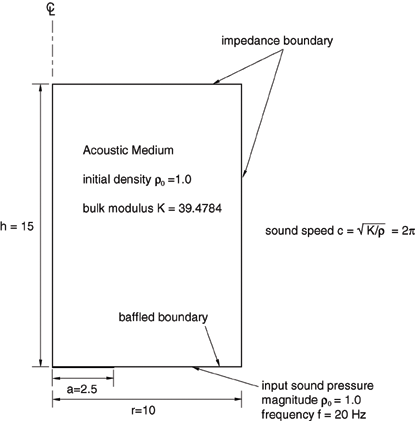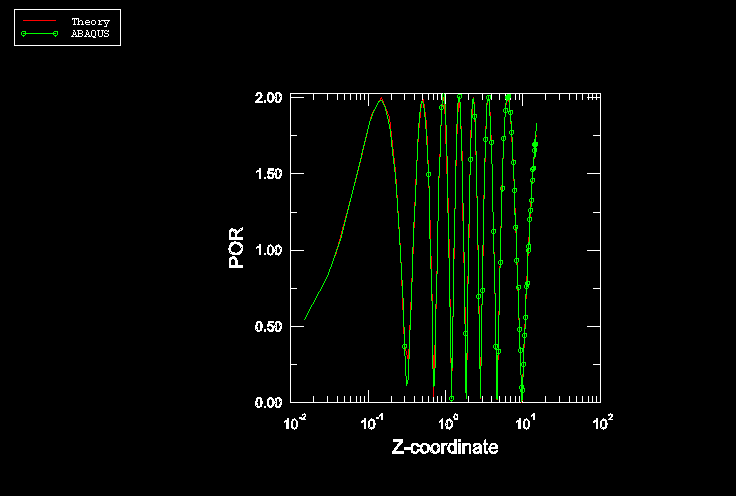Problem description
The model is shown in Figure 1. No particular set of units is used in this case: all units used are assumed to be consistent. The acoustic model is a cylinder with radius r = 10 and height h = 15. The density and the bulk modulus are assumed to be 1.0 and 39.4784, respectively, which corresponds to a sound speed of 2. Default nonreflecting boundary conditions are applied on the top and the lateral surfaces of the cylinder. The baffled condition is imposed by specifying no load or boundary condition at all on the planar baffle. The interaction between the piston and the acoustic medium is simulated by applying a uniform volumetric acceleration on the interface. Since the response of the model is axisymmetric, ACAX8 elements are adopted to model the acoustic medium. The analytical solution of the sound pressure along the axis of axisymmetry is given by the following equation:
with defined by
where is the mass density of the material, is the sound speed of the material, is the wave number, is the particle velocity, is the radius of the baffled planar piston, and z is the z-coordinate along the axis of symmetry.

